Common Types of Collision Damage and How They’re Repaired
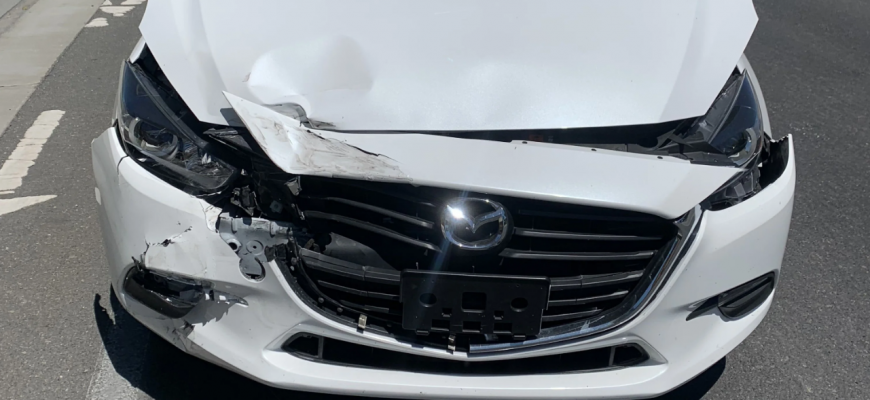
Common Types of Collision Damage and How They’re Repaired
Understanding the nuances of collision damage and the intricacies of its repair is crucial for any vehicle owner. In Australia, where road conditions and regulations may differ from other parts of the world, being informed about these aspects is even more vital. This article delves into the common types of collision damage encountered by Australian drivers and outlines the repair processes, aiming to equip you with knowledge that ensures your vehicle’s longevity and safety.
Types of Collision Damage
Front-End Collision Damage
Front-end collisions often result in visible damage to the bumper, bonnet, and lighting systems. Beyond aesthetics, such impacts can affect safety features, including airbag deployment sensors. Repairing front-end damage typically involves panel beating, replacement of damaged parts, and precise paintwork to match the vehicle’s original color.
Rear-End Collision Damage
Rear-end impacts can deform the bumper, trunk, and exhaust system. Hidden damage might also occur, affecting the alignment and structural integrity. Repairs may range from simple bumper replacements to more complex adjustments to the vehicle’s frame or undercarriage.
Side-Impact Collision Damage
Side collisions can crumple doors, shatter windows, and bend the vehicle’s frame. Repairing this type of damage often requires extensive work, including door panel replacement and, in severe cases, cutting out and replacing sections of the vehicle’s frame.
Roll-Over Damage
Roll-over accidents typically cause significant damage to the roof, potentially compromising the vehicle’s structural integrity. Repairing roll-over damage is complex, often involving the replacement of the entire roof, realignment of the frame, and sometimes, the painstaking task of ensuring the vehicle is structurally sound and safe to drive.
How Collision Damages Are Repaired
Assessment and Estimation
The repair process begins with a thorough assessment to determine the extent of the damage. In Australia, certified technicians use advanced diagnostic tools to evaluate both visible and underlying damage, ensuring an accurate repair estimate.
Body Repair or Replacement
Deciding whether to repair or replace a damaged part depends on the severity of the damage and the cost-effectiveness of each option. Technicians employ various techniques, from traditional panel beating to the use of modern materials and adhesives, to restore the vehicle’s appearance and integrity.
Painting and Finishing
Matching the paint colour and finish of a vehicle is an art. Modern paint shops use computerized systems to create a perfect match. The painting process involves several stages, including priming, colour application, and sealing, to ensure a durable and aesthetically pleasing finish.
Structural Repairs
Vehicles suffering from frame or structural damage require specialized equipment for alignment and straightening. This process is critical to restoring the vehicle’s safety and drivability, adhering to strict Australian standards.
Safety Inspections and Testing
After repairs, vehicles undergo rigorous safety inspections and testing to ensure they meet Australia’s stringent road safety standards. This includes everything from wheel alignment checks to airbag system diagnostics.
Considerations for Australian Vehicle Owners
Insurance Claims
Navigating insurance claims is a crucial step in the repair process. In Australia, it’s important to understand your policy’s coverage, including the choice of repairer and how claims affect future premiums.
Costs and Warranty
Understanding the costs involved and the warranty offered on repairs is essential. Reputable repairers will provide transparent quotes and warranties that cover both parts and labour.
Latest Trends in Collision Repair Technology
Advanced Materials and Techniques
The use of advanced materials like carbon fibre and aluminium requires specialized repair techniques. Australian repairers are adopting these new materials and methods, ensuring repairs meet the highest standards.
Digital and 3D Technologies
Digital scanning and 3D printing are revolutionizing the way custom parts are fabricated and fitted. These technologies allow for precise repairs and can significantly reduce the time your vehicle spends in the shop.
For South Australian drivers, understanding the types of collision damage and their repair processes is more than just about keeping your vehicle looking its best; it’s about ensuring its safety and reliability. By choosing reputable repair services and staying informed about the repair process, you can navigate the aftermath of a collision with confidence. Remember, the safety of your vehicle impacts not just you but everyone on the road.
Other Sources
To ensure the accuracy and reliability of the information provided, this article references data and guidelines from, the Australian Automotive Aftermarket Association (AAAA), National Collision Repairer magazine, the Insurance Council of Australia, and Choice Magazine. These sources are instrumental in providing up-to-date, Australia-specific information on vehicle repairs and safety standards.
Safety First: How Repairs Ensure Your Vehicle’s Safety on the Road

In the bustling streets of Adelaide, where diverse landscapes meet urban sprawls, the safety of your vehicle isn’t just a priority—it’s a necessity. The phrase “Safety First” is not just a mantra but a critical approach to ensuring that every journey, whether it’s a short commute within the city or a long drive across the outback, is undertaken with the utmost confidence in your vehicle’s reliability and safety. This article delves into the indispensable role that regular vehicle repairs and maintenance play in safeguarding your safety on the road.
The Link Between Vehicle Maintenance and Road Safety
Recent statistics from the Australian Bureau of Statistics (ABS) and the Australian Transport Safety Bureau (ATSB) highlight a concerning trend: a significant number of road accidents are attributable to vehicle defects. These aren’t just numbers; they represent real-life incidents where proper maintenance could have made a difference. Regular vehicle check-ups and repairs are not just about prolonging the life of your vehicle but are crucial in preventing accidents and ensuring the safety of all road users.
Essential Vehicle Maintenance for Safety
Tyres
Your vehicle’s tyres are the only point of contact with the road, making their maintenance paramount. Regular checks for wear and tear, ensuring correct tyre pressure, and replacing old tyres can drastically improve your vehicle’s handling and braking. Incorrect tyre pressure alone can lead to reduced grip on the road, increased stopping distances, and even tyre blowouts.
Brakes
The braking system is your vehicle’s most critical safety feature. Signs of wear, such as squealing noises, a spongy brake pedal, or a car that pulls to one side when braking, require immediate attention. Regular inspections by a professional can identify issues before they compromise your safety.
Lights
Fully functional lighting is essential for visibility at night and during poor weather conditions. This includes headlights, brake lights, turn signals, and hazard lights. Regular checks ensure you can see and be seen by other road users, reducing the risk of accidents.
Windscreen and Wipers
A clear windscreen is vital for good visibility. Windscreen cracks can impair your view and potentially lead to more significant issues if not addressed. Similarly, wiper blades should be replaced regularly to ensure they can effectively clear your windscreen in adverse weather conditions.
Steering and Suspension
These components are crucial for maintaining control of your vehicle. Issues with steering and suspension can lead to handling difficulties, increasing the risk of accidents. Regular checks ensure these systems are functioning correctly, keeping your vehicle stable and responsive on the road.
Recognizing When Your Vehicle Needs Repairs
Being attuned to your vehicle’s performance is key. Unusual noises, changes in handling, or warning lights on the dashboard are all indicators that your vehicle may need professional attention. Ignoring these signs can lead to more significant, costly repairs down the line and, more importantly, compromise your safety.
The Role of Professional Mechanics
Choosing a qualified and experienced mechanic is crucial. In Australia, look for certifications or accreditation by reputable organizations such as the Australian Automotive Aftermarket Association (AAAA). These professionals have the expertise to diagnose and repair issues accurately, ensuring your vehicle meets safety standards.
DIY Maintenance vs. Professional Repairs
While some maintenance tasks can be safely undertaken at home, such as oil changes and tyre pressure checks, others should always be left to professionals. Brake repairs, electrical issues, and anything involving the vehicle’s safety systems are complex and require specific tools and knowledge.
The Impact of Neglecting Vehicle Repairs
Neglecting vehicle maintenance can have dire consequences. Beyond the increased risk of accidents, driving a vehicle deemed unroadworthy can lead to legal implications in Australia. Case studies from the National Roads and Motorists’ Association (NRMA) and the Royal Automobile Club of Victoria (RACV) illustrate the real-life impacts of such negligence.
How Regular Repairs Enhance Long-Term Vehicle Safety and Value
Maintaining your vehicle isn’t just about safety; it’s also an investment in its longevity and resale value. A well-maintained vehicle logbook can significantly enhance your vehicle’s resale value, proving its history of care and maintenance.
The mantra “Safety First” encapsulates the essence of responsible vehicle ownership. Regular maintenance and timely repairs are not just measures to prolong your vehicle’s life but are fundamental practices to ensure your safety and that of others on the road. By adhering to the guidelines outlined in this article, you contribute to a safer driving environment for everyone.
Other Sources
– Royal Automobile Association (RAA)
– Australian Automobile Association (AAA)
– National Roads and Motorists’ Association (NRMA)
– Australian Automotive Aftermarket Association (AAAA)
The Environmental Impact of Collision Repairs
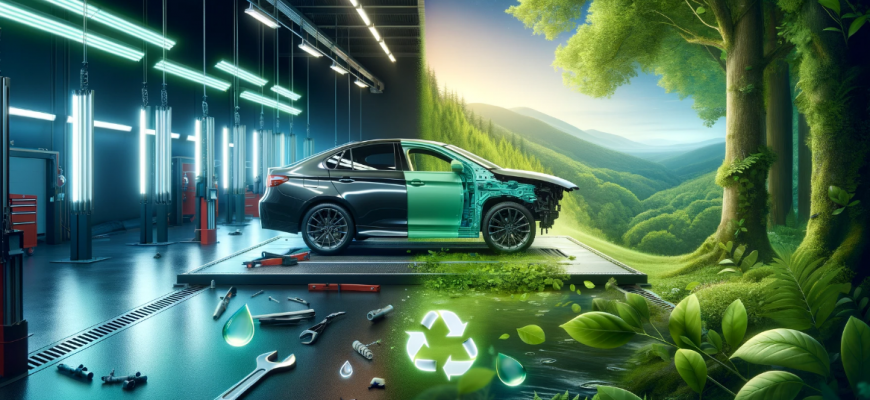
In the bustling streets of Australia, vehicles are an indispensable part of daily life, making collision repairs a frequent necessity. However, the environmental footprint of these repairs is often overlooked. This article delves into the significant impact collision repairs can have on the environment and showcases how Adelaide’s repair shops, particularly Dynamic Paint N Panel, are leading the charge in adopting more sustainable practices. Their efforts not only aim to protect our planet but also offer cost savings for customers, setting a commendable example for the industry.
The Environmental Challenge of Collision Repairs
Collision repair processes, from dent removal to full bodywork, traditionally involve activities that pose considerable environmental risks. The use of solvent-based paints releases volatile organic compounds (VOCs) into the atmosphere, contributing to air pollution and posing health risks to workers. Energy consumption is high, with extensive use of electricity for welding, painting, and drying. Moreover, the disposal of non-recyclable materials, such as certain plastics and composites, adds to the growing problem of landfill waste. In Australia, the automotive repair industry is grappling with these challenges, seeking ways to mitigate its environmental impact while maintaining high standards of service.
Adelaide’s Approach to Sustainable Collision Repairs
Adelaide has emerged as a frontrunner in addressing the environmental concerns associated with collision repairs. Shops across the city are adopting innovative practices to reduce their ecological footprint. Key among these practices is the shift towards water-based paints, which significantly lower VOC emissions compared to their solvent-based counterparts. Energy efficiency is another focus area, with many shops investing in LED lighting and energy-efficient equipment to cut down electricity use. Recycling has also taken center stage, with efforts to salvage and reuse metal parts and plastics wherever possible.
Dynamic Paint N Panel: A Case Study
Dynamic Paint N Panel stands out in Adelaide’s automotive repair landscape for its commitment to sustainability. This shop has embraced a holistic approach to eco-friendly practices, starting with the adoption of water-based paints that are less harmful to the environment and safer for employees. They have invested in state-of-the-art equipment that not only performs repairs more efficiently but also consumes less energy.
Dynamic Paint N Panel’s dedication to minimizing waste is evident in their rigorous recycling program, which ensures that all recyclable materials are properly processed, reducing landfill contribution. Their efforts have not gone unnoticed, earning them recognition within the industry for their environmental stewardship.
What sets Dynamic Paint N Panel apart is their ability to demonstrate that eco-friendly repairs can also be cost-effective for customers. By reducing waste and optimizing repair processes, they are able to offer competitive pricing without compromising on quality. This win-win scenario encourages more vehicle owners to choose sustainable repair options, contributing to a larger positive impact on the environment.
The Benefits of Eco-Friendly Collision Repairs
The shift towards sustainable collision repairs offers numerous benefits. Environmentally, it significantly reduces the industry’s carbon footprint, decreases air and water pollution, and minimizes waste. For customers, it often translates to lower repair costs and the peace of mind that comes from choosing an environmentally responsible service. Furthermore, repair shops that adopt green practices enhance their reputation, attracting customers who value sustainability.
The Australian government and various environmental organizations support these initiatives, offering incentives and recognition to businesses that lead the way in sustainability. This not only helps the environment but also sets a standard for the industry, encouraging more shops to adopt eco-friendly practices.
The environmental impact of collision repairs is a pressing issue that demands attention and action. Adelaide’s repair shops, led by pioneers like Dynamic Paint N Panel, are showing that it is possible to combine high-quality service with environmental responsibility. Their efforts are not only safeguarding the planet but also paving the way for a more sustainable automotive repair industry. As consumers, supporting businesses that prioritize eco-friendly practices is a powerful way to contribute to environmental conservation. Together, we can drive towards a greener, more sustainable future.
Other Sources
Dynamic Paint N Panel. “Our Commitment to the Environment.”
DIY Car Care Tips: Maintaining Your Vehicle Post-Repair
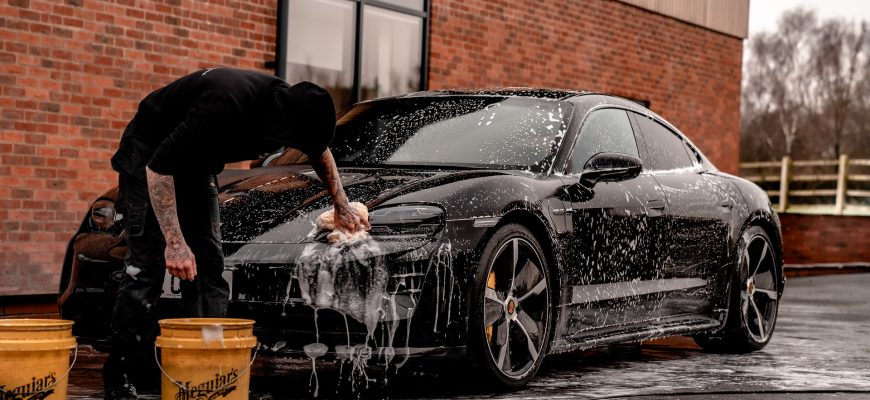
After your car has been repaired, whether it was a minor scratch or major bodywork, the journey to maintain its pristine condition is just beginning. For Australian car owners, the harsh sun, coastal salt air, and rugged roads can pose unique challenges to keeping your vehicle in top shape. This article delves into essential DIY car care tips that will help you preserve the finish of your repaired vehicle, ensuring it remains as good as new for years to come.
Understanding the Basics of Car Maintenance Post-Repair
Maintaining a vehicle post-repair is crucial not just for aesthetic reasons but also to safeguard your investment. Repairs, especially those related to the car’s body and paintwork, require special attention to prevent future damage and to maintain the vehicle’s value. Unlike regular maintenance, post-repair care focuses on protecting the repair work and ensuring the vehicle’s finish remains unaffected by environmental factors and daily use.
Essential DIY Car Care Tips
Regular Cleaning and Washing
The first step in maintaining your vehicle’s post-repair condition is regular cleaning. Dirt, dust, bird droppings, and tree sap can cause damage over time, eating away at the new paint if not removed promptly. For Australian car owners, it’s advisable to wash your car every two weeks using a pH-neutral car wash shampoo. Websites like CarsGuide recommend avoiding harsh chemicals and opting for microfiber cloths and mitts to prevent scratching the surface.
Waxing and Polishing
Applying a quality car wax or sealant every three to six months can provide a protective layer over the paint, shielding it from UV rays and pollutants. Polishing, on the other hand, should be done sparingly, ideally once a year, to maintain the shine without wearing down the paint. Choice.com.au lists several top-rated products that are suitable for the Australian climate, ensuring long-lasting protection and gloss.
Checking and Maintaining Fluid Levels
Fluids are the lifeblood of your vehicle. Ensuring engine oil, coolant, brake fluid, and transmission fluid are at optimal levels and in good condition is essential. Use the manufacturer’s recommended fluids and check them monthly. This not only keeps your car running smoothly but also prevents corrosion and wear that can compromise your vehicle’s post-repair state.
Tyre Maintenance
Tyres directly impact your vehicle’s performance and safety. Regular checks for pressure and tread wear are vital. Adhere to the recommended tyre pressure for your vehicle, as incorrect pressure can lead to uneven wear and reduce the lifespan of your tyres. The Australian Automobile Association (AAA) provides guidelines on tyre maintenance that are worth consulting.
Protecting Your Car from the Elements
Australia’s weather can be harsh on vehicles. Protect your car from the sun by parking in the shade or using a car cover, especially if the paint is newly applied. If you live near the coast, the salt in the air can accelerate corrosion; regular washing can help mitigate this risk. The RAA and NRMA offer tips on protecting your vehicle from environmental damage.
Advanced Maintenance Tips
Scratch and Dent Prevention
Even with careful driving, scratches and dents can occur. Using touch-up paint for small scratches and considering paint protection films can offer an additional layer of defense. For DIY solutions, Australian automotive experts recommend products that match your car’s exact paint code to ensure a seamless repair.
Interior Care and Preservation
The interior of your car deserves as much attention as the exterior. Use UV-protectant sprays for dashboards and panels, and condition leather seats regularly to prevent cracking. Fabric protectors can keep upholstery looking new. Australian brands offer a range of products designed for the local market, ensuring your car’s interior remains in excellent condition.
Regular Inspections and Professional Servicing
Despite the best DIY care, regular professional inspections are crucial. Mechanics can spot potential issues before they become major problems, saving you time and money in the long run.
Maintaining your vehicle post-repair requires dedication and the right approach, especially in Australia’s unique environment. By following these DIY car care tips, you can preserve the finish of your repaired car, ensuring it stays in excellent condition for years to come. Remember, the effort you put into maintaining your vehicle not only protects your investment but also ensures it remains a pleasure to drive.
Other Sources
– CarsGuide. [https://www.carsguide.com.au/]
– Drive. [https://www.drive.com.au/]
– Australian Automobile Association (AAA). [https://www.aaa.asn.au/]
– Royal Automobile Association (RAA). [https://www.raa.com.au/]
– National Roads and Motorists’ Association (NRMA). [https://www.mynrma.com.au/]
Why Genuine Parts Matter for Your Vehicle’s Repair
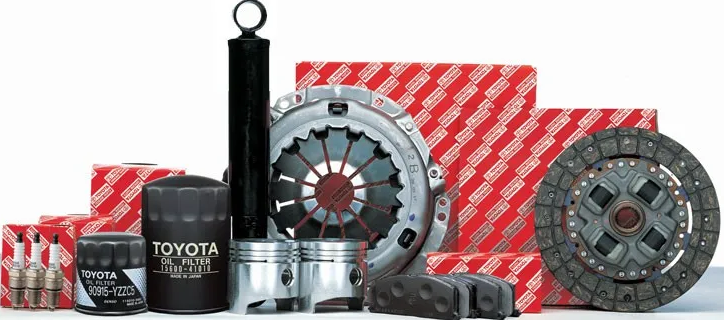
When it comes to maintaining and repairing your vehicle, the debate between using genuine versus aftermarket parts is a pivotal one. For many Australian vehicle owners, the choice might not seem significant at first glance. However, the type of parts used in your vehicle can have profound implications not only on its performance but also on your safety and the vehicle’s overall lifespan. This article delves into the essential reasons why opting for genuine parts is a wise decision for any vehicle repair.
Understanding Vehicle Parts: Genuine vs. Aftermarket
At the core of this discussion are two types of parts: genuine and aftermarket. Genuine parts, also known as Original Equipment Manufacturer (OEM) parts, are made directly by the vehicle’s manufacturer. They are the very same parts used in the production of new vehicles. On the other hand, aftermarket parts are produced by different manufacturers and not endorsed by the original vehicle manufacturer. While aftermarket parts are often touted for their affordability and variety, they may not always match the quality and compatibility of genuine parts.
The Importance of Genuine Parts for Your Vehicle
Safety: The paramount concern for any vehicle owner should be safety. Genuine parts are designed and tested specifically for your vehicle model, ensuring a perfect fit and optimal performance. This precise engineering guarantees that your vehicle operates as it was intended, maintaining the manufacturer’s safety standards. In contrast, aftermarket parts might not have undergone the same rigorous testing, potentially compromising vehicle safety.
Warranty Protection: Using genuine parts is also crucial in preserving your vehicle’s warranty. Many manufacturers stipulate that the warranty becomes void if aftermarket parts cause damage. Genuine parts come with their own warranty coverage, offering peace of mind and protection against defects.
Long-Term Value: While genuine parts might come with a higher price tag initially, their value becomes evident in the long run. Designed to meet the exact specifications of your vehicle, genuine parts usually last longer and perform better, reducing the need for frequent replacements. This can lead to significant savings over time, not to mention the avoidance of the hassle associated with less reliable aftermarket parts.
How to Ensure You’re Getting Genuine Parts
Ensuring you’re getting genuine parts for your vehicle repair or service might seem daunting, but it doesn’t have to be. The simplest way to guarantee authenticity is by purchasing parts from authorized dealers or service centers. When taking your vehicle in for service, explicitly request OEM parts and ask to see the parts’ packaging or documentation to verify their authenticity. Genuine parts often bear the manufacturer’s logo or come with certification marks that attest to their quality.
Another tip is to ask for parts by their specific part number. This can help avoid any confusion and ensures that the parts installed on your vehicle are the exact ones designed for its make and model. Being proactive in this way can make a significant difference in the quality of repair and maintenance your vehicle receives.
Choosing genuine parts for your vehicle’s repair isn’t just about maintaining its performance; it’s about prioritizing safety, preserving your warranty, and investing in your vehicle’s long-term value. While the allure of cheaper aftermarket parts can be tempting, the potential risks and costs they pose down the line are considerable. For Australian vehicle owners, the decision to opt for genuine parts is a testament to the care and investment in their vehicle’s longevity and reliability. Remember, when it comes to vehicle repair and maintenance, quality should never be compromised. Prioritize genuine parts, and give your vehicle the care it deserves.
Top 5 Questions to Ask Your Collision Repair Technician
Navigating the aftermath of a car accident in Australia involves not just dealing with insurance and potential injuries but also ensuring your vehicle is properly and safely repaired. Selecting a reputable collision repair technician is a pivotal step in this process. By asking the right questions, you can guarantee high-quality repairs, ensure your peace of mind, and uphold the safety and longevity of your vehicle.
Why Ask Questions?
Being informed and prepared when dealing with collision repair services helps you understand the repair process, avoid unnecessary expenses, and ensure your vehicle is restored to its pre-accident condition. Knowledge empowers you to make informed decisions, ensuring your car receives the best possible care.
Question 1: What Certifications Do You Hold?
Certifications are a testament to a technician’s expertise and adherence to industry standards. Ask about their certifications, such as industry standard qualifications or manufacturer-specific endorsements, which indicate their commitment to maintaining high standards of repair quality and safety.
Question 2: Can You Provide a Detailed Repair Estimate?
Understanding the scope of work and the costs involved is crucial. A detailed estimate should itemise the repairs needed, and parts required, and provide an estimation of time and cost. This transparency helps you grasp the extent of damage and the necessary steps to repair it.
Question 3: Will the Repairs Affect My Car’s Warranty?
It’s essential to understand how repairs might interact with your car’s manufacturer warranty. The technician should assure you that using OEM (Original Equipment Manufacturer) parts and following approved procedures will not void any existing warranties, safeguarding your vehicle’s value and compliance.
Question 4: How Long Will the Repairs Take?
A realistic timeline for repairs allows you to plan accordingly. The technician should provide a tentative completion date, taking into account the availability of parts and the extent of the damage, helping you manage expectations and alternative transportation needs.
Question 5: Do You Provide a Guarantee or Warranty on Repairs?
A guarantee on repair work offers future peace of mind. Inquire about the type of warranty the shop offers on their repairs, including what it covers and its duration, ensuring the longevity and reliability of the repair work.
Tips for Choosing a Collision Repair Technician
When selecting a collision repair technician, your diligence is your best ally. Here’s a checklist of attributes and red flags to guide your choice:
Checklist of Attributes:
– Up-to-date certifications and training.
– Clear and comprehensive communication.
– Warranty offerings on repair work.
– Positive customer reviews.
– A clean and professional workspace.
Red Flags to Watch Out For:
– Absence of industry certifications.
– Vague or incomplete repair estimates.
– Use of pressure tactics.
– Lack of warranty on repairs.
– Negative customer feedback.
This checklist can help you identify a skilled and trustworthy technician, ensuring your vehicle is in good hands.
Choosing the right collision repair technician is more than just asking questions; it’s about comparing options and making an informed decision. We encourage you to gather estimates and opinions from multiple technicians, focusing on quality and safety over cost. This proactive approach ensures your vehicle returns to the road in top condition, safeguarding both your investment and your safety.
Remember, the right questions lead to the right repairs. Take control of the repair process by being informed, vigilant, and selective, ensuring your vehicle receives the best possible care post-collision.
South Australia’s Leading Crash Repair Experts: Dynamic Paint N Panel
Expert Collision Repairs at Dynamic Paint N Panel
When your vehicle has suffered the misfortune of a collision, finding a trusted and proficient crash repairer becomes your top priority. Dynamic Paint N Panel stands as a beacon of excellence in Australia for restoring your vehicle to its pristine condition. This guide is crafted to navigate you through the process of professional repair with an emphasis on the bespoke services offered by Dynamic Paint N Panel, ensuring your car’s safety and aesthetics are restored to your satisfaction.
Understanding the Need for Expert Crash Repair
After an accident, the significance of entrusting your vehicle to expert hands cannot be overstated. Dynamic Paint N Panel specializes in a range of repair services, from minor dents to major collision damage. Our team of certified technicians utilizes the latest technology and techniques to ensure your vehicle not only looks its best but adheres to the highest safety standards.
Why Choose Dynamic Paint N Panel?
Unparalleled Expertise and Service
With years of experience under our belts, our reputation for quality repairs and customer satisfaction speaks for itself. Our technicians are continuously trained in the latest repair methods, ensuring your vehicle receives the best care possible.
State-of-the-Art Technology
We employ advanced repair technologies, including paintless dent removal and precision color matching, to ensure your vehicle returns to you in factory condition.
Customer-Focused Approach
At Dynamic Paint N Panel, we understand the stress involved in car repairs. We offer transparent quotes, comprehensive warranties, and personal attention to each client. Your peace of mind is our priority.
Navigating Insurance Claims with Ease
Dealing with insurance can be daunting. Dynamic Paint N Panel offers guidance and support through the insurance claim process, working closely with most insurers to streamline your experience. Whether you choose to proceed through insurance or pay out of pocket, we ensure a smooth and transparent process, keeping you informed every step of the way.
Our Comprehensive Repair Services
From detailed assessments to the final polish, Dynamic Paint N Panel offers a wide array of services tailored to meet your needs:
– Collision Repairs: Utilising the latest in body repair technology, we ensure your vehicle is restored to its original safety and structural integrity.
– Paintless Dent Removal: For minor dents and dings, our non-invasive techniques restore your vehicle’s appearance without the need for repainting.
– Custom Paint Jobs: Our custom paint solutions offer superior finish and longevity, perfectly matching your vehicle’s original color and finish.
– Additional Services: Including wheel refurbishment, headlight restoration, and interior repairs, we ensure every aspect of your vehicle is addressed.
Preparing Your Vehicle for Repair
Before servicing, we recommend removing personal items and documenting your vehicle’s condition. This not only facilitates a smoother repair process but also assists with any insurance claims.
Engage with Dynamic Paint N Panel Today
If you’re facing the aftermath of a vehicle collision, choose Dynamic Paint N Panel for repairs that combine craftsmanship with customer care. Contact us today for a consultation or quote, and experience the peace of mind that comes with knowing your vehicle is in expert hands.
Visit Us or Get in Touch
For more information, to view our work, or to start your repair journey, visit our website at dynamicpaintnpanel.com.au. You can also reach us directly at (08) 8362 7395 or follow us on Facebook and Instagram for updates and customer testimonials showcasing our commitment to excellence and quality.
Dynamic Paint N Panel is not just about repairs; it’s about restoring your peace of mind and getting you back on the road safely and stylishly. Trust us to turn the tide on your collision repair experience, ensuring your vehicle’s story continues smoothly and beautifully.
NEED EXPERT ADVICE RIGHT NOW?
CALL (08) 8362 7395 and Speak with our Crash Repair Experts.
The Latest Trends in Auto Body Repair Technologies: Navigating the Future of Automotive Care in Australia
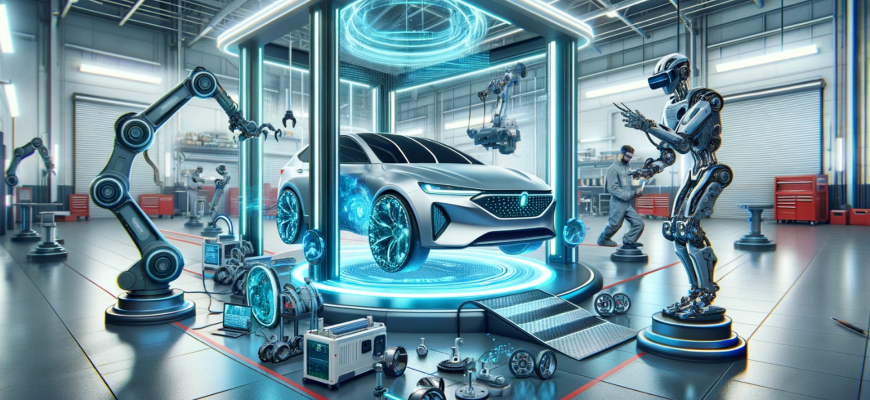
The auto body repair industry is witnessing a remarkable transformation, fueled by technological advancements that promise to redefine the way we maintain and repair our vehicles. In Australia, where the automotive sector is a pivotal part of the economy and daily life, these innovations are not just enhancing operational efficiencies but are also significantly improving the consumer experience. This article delves into the latest trends in auto body repair technologies, highlighting how they benefit Australian vehicle owners.
Paintless Dent Removal (PDR) Techniques
Paintless Dent Removal (PDR) represents a significant leap forward from traditional dent repair methods. And it’s something we are particularly proud of at Dynamic Paint N Panel. This technique involves the meticulous manipulation of dents from behind the vehicle’s paneling, preserving the original paintwork. For consumers, the advantages are manifold: PDR offers a cost-effective solution to dent repairs, without the need for repainting, thereby maintaining the vehicle’s value and aesthetic appeal. Moreover, PDR can often be completed in a fraction of the time required for conventional repairs, providing a swift return to the road, and at a lower cost than conventional repairs.
Advanced Diagnostics and Robotics
The integration of advanced diagnostics and robotics in auto body repair is setting new standards for accuracy and efficiency. Sophisticated scanning tools can now detect minute damages invisible to the naked eye, ensuring comprehensive repair. Robotics, on the other hand, brings unmatched precision to the repair process, reducing the possibility of human error. For the Australian consumer, this translates to more accurate estimates, superior repair quality, and ultimately, enhanced safety and reliability of the repaired vehicle.
Augmented Reality (AR) in Repair Services
Augmented Reality (AR) is introducing a new dimension to auto body repair, from training technicians with virtual simulations to enhancing customer service. AR can project virtual images of repairs over the actual vehicle, helping consumers understand the work required and the parts involved. This technology fosters transparency and trust, empowering Australian consumers with knowledge and insight into their vehicle repairs.
Augmented Reailty is still largely untested and relies heavily on AI technology and training of specialist technicians – is this style of repair still decades away, or just around the corner?
The Impact of Insurance and Warranty Advances
Technological advancements are also streamlining the insurance claims and warranty process, offering faster and more efficient service. Digital platforms enable quicker submission of claims and documentation, reducing processing times and getting repairs started sooner. For Australians, this means less downtime without their vehicle and a smoother, more convenient claims experience.
Challenges and Considerations
Despite the promising advancements, challenges such as the need for skilled technicians and the initial cost of adopting new technologies persist. Additionally, ensuring equitable access to these advanced repair services across both urban and rural Australia remains a concern.
The landscape of auto body repair in Australia is evolving, driven by technological innovations that promise improved efficiency, sustainability, and customer satisfaction. As the industry continues to embrace these trends, Australian consumers stand to benefit from repairs that are quicker, more affordable, and of higher quality than ever before. Embracing these advancements is not just about keeping pace with technology but about moving forward into a future where auto care is more accessible, transparent, and aligned with the values of today’s society.
One thing that never changes is DPPs commitment to ensuring flawless repairs, and top notch customer service no matter what technology we have at our disposal. We started using traditional methods and have continued to evolve with advances in technology. To see how we can improve the of your car’s body work call us today. We love helping South Australian drivers beaming with pride over their car.
How to Fix a Car Dent: A Comprehensive Guide for South Australians
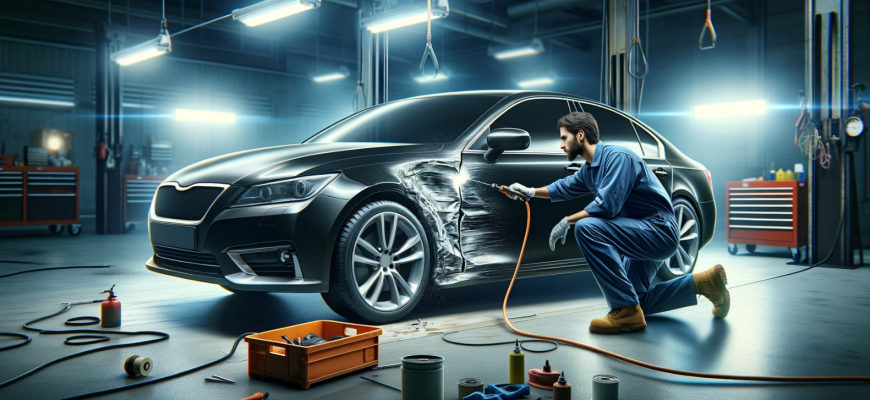
How to Fix a Car Dent: A Comprehensive Guide for South Australians
Car dents are more than just an eyesore; they can also decrease the value of your vehicle and, in some cases, affect its structural integrity. Whether it’s from a minor fender bender, hail damage, or a shopping cart mishap, understanding the process behind car dent repair is crucial for any car owner in Australia. This guide dives into the world of professional car dent repair, highlighting the expertise, tools, and considerations involved in making your vehicle look as good as new.
Understanding Car Dents
Car dents can vary significantly, from small dings to large indentations. The repair approach depends on several factors, including the dent’s size, location, and the vehicle’s body type. Understanding these differences is the first step in assessing repair options.
The Professional Dent Repair Process
Initial Assessment
A professional technician begins with a thorough assessment to understand the extent of the damage. This step is crucial as some dents may have underlying issues that aren’t immediately visible.
Repair Methodologies
Paintless Dent Removal (PDR): PDR is a popular repair method for small to medium-sized dents, where the paint surface is still intact. Technicians use special tools to gently massage the dent from behind the vehicle’s panel, restoring its original shape without needing to repaint the area.
Traditional Dent Repair: Larger dents or those where the paint has been compromised require a more invasive approach. This method involves sanding down the damaged area, applying a body filler, and repainting, which can be a time-consuming process.
Tools and Equipment
The tools for dent repair range from simple hand tools for PDR to sophisticated paint systems for matching the vehicle’s original color. 3D imaging technology is also becoming more prevalent for precise damage assessment.
The Expertise Behind Dent Repair
Dent repair is a skilled trade that requires significant training and experience. In Australia, technicians often undergo vocational training, such as a Certificate III in Automotive Body Repair Technology, complemented by years of on-the-job training. This expertise is crucial for effectively restoring a vehicle’s appearance and ensuring the repair lasts.
DIY vs. Professional Repair
While DIY kits are available, they often yield subpar results and can even worsen the damage. Professional repairs guarantee the use of the correct techniques and materials, ensuring a result that maintains your car’s value and appearance.
Choosing a Repair Service
When selecting a repair service, look for certified technicians with positive reviews and transparent warranty policies. Costs can vary based on the repair scope, but investing in quality repair is crucial for long-term satisfaction.
Maintenance Tips to Avoid Future Dents
Preventive measures can minimize the risk of dents. Parking away from other vehicles, using protective accessories like bumper guards, and maintaining a safe distance from potential hazards can help keep your car dent-free.
Car dent repair is a nuanced process that blends art and science. By understanding the types of dents, repair methodologies, and the importance of professional expertise, car owners can make informed decisions about their vehicle’s care. Always consult with a professional to assess and repair dents promptly, ensuring your car remains in pristine condition.
Remember, the appearance of your vehicle is not just about aesthetics; it’s also about maintaining its value and ensuring its longevity. Trusting professionals with the right training and tools for the job is the best way to achieve this.
The Hidden Risks of DIY Car Dent Removal: Why Professionals Do It Better
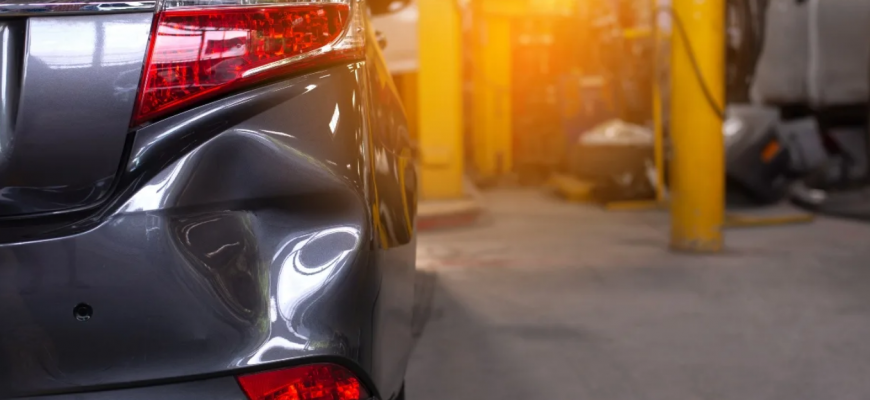
A dent on your car can be an eyesore and a reminder of an unfortunate incident. In Australia, where cars are not just a mode of transport but often a reflection of one’s lifestyle, keeping them in pristine condition is a priority for many. Among the myriad DIY fixes touted online, using a plunger to remove car dents stands out for its simplicity and the allure of a quick fix. However, the real question remains: Is it a viable long-term solution, or does it mask deeper issues?
Understanding the Plunger Method
The principle behind the plunger method is straightforward: by creating a vacuum, the plunger can pull the dented metal back into place. This method is often recommended for small to medium-sized dents where the paint has not been cracked or chipped. The steps involve moistening the plunger and the dent area to create a better seal, then using firm, consistent pressure to pop the dent back out – but there is a catch. It appears to only “work” (sometimes) on plastic parts of the car’s body work.
Hazards of DIY Car Dent Removal
The simplicity of the plunger method belies the potential risks involved in DIY dent removal. Applying uneven pressure or using the technique on unsuitable dents can exacerbate the damage, affecting the paint and underlying metal. Moreover, without the proper assessment, what appears as a minor dent could be indicative of more significant structural damage, a fact that DIY methods can easily overlook.
The Professional Alternative: Paintless Dent Removal (PDR)
Paintless Dent Removal (PDR) is a professional repair process that involves specialized tools and techniques to remove dents without affecting the vehicle’s factory paint job. Unlike DIY methods, PDR is performed by trained technicians who can assess the damage accurately and determine the most effective repair strategy. This method not only ensures the integrity of the repair but also maintains the vehicle’s resale value.
Why Trust Professionals Over DIY?
Professionals bring years of training and experience, coupled with an understanding of the nuances of automotive bodywork. They use specialized tools designed to access and repair dents from behind the vehicle’s paneling, ensuring a repair that’s both effective and invisible. The risk of additional damage is minimized, and many professionals offer warranties on their work, something DIY repairs cannot match.
Cost-Benefit Analysis: DIY vs. Professional Dent Removal
While the initial cost of a DIY fix might seem lower, the potential for inadvertently increasing the damage can lead to more substantial repair bills down the line. Professional PDR, on the other hand, while seemingly more expensive upfront, can prevent further issues and help maintain the car’s value over time. It’s a classic case of spending a little now to save a lot later.
Conclusion
While the allure of a quick and easy DIY fix for car dents is understandable, the potential risks and downsides cannot be ignored. Professional paintless dent removal offers a safer, more reliable solution that preserves both the vehicle’s appearance and its value. By choosing a professional repair, car owners can ensure their vehicle receives the care it deserves, safeguarding their investment for the future.

